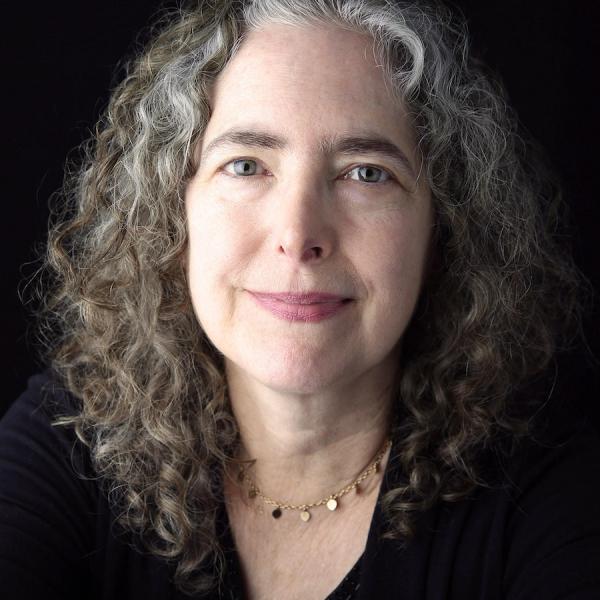Quick Study: April 20, 2023
Jo Reed: Welcome to Quick Study, the monthly podcast from the National Endowment for the Arts. This is where we'll share stats and stories to help us better understand the value of art in everyday life. Sunil Iyengar is the pilot of Quick Study. He's the director of research and analysis here at the Arts Endowment. Hi, Sunil.
Sunil Iyengar: Hi, Jo. How are you doing?
Jo Reed: I'm good. So what are we talking about today?
Sunil Iyengar: Today's subject is a study by Joel Waldfogel, an economics professor and the associate dean of MBA programs at the University of Minnesota's Carlson School of Management. Jo, over the years Waldfogel has added greatly to our understanding of digitization and its effects on media markets, especially creative outputs such as recorded music, but also books, movies, and TV. The research I'm going to discuss today is based on a working paper he's contributed to the National Bureau of Economics Research. Let me pause a moment to tell you about this venerable body, the NBER.
Jo Reed: Okay, I'm ready.
Sunil Iyengar: So the NBER, they have a stable of affiliated scholars in different specialties of economics research. They put on conferences and the like, and their papers straddle such topics as corporate finance, healthcare economics, behavioral finance, international trade. We're not talking about any of that stuff today, but they also publish papers on innovation policy, which brings us to the study we're discussing today. So Waldfogel's study, his starting point and his ending place with this paper, is the uncontroversial assumption that when it comes to product innovation, diversity and inclusion are good things. That is, the more widely we can cast the net for entrants into a given field, the greater the benefits not only for innovation itself but for the producers and consumers of a gooder service. So where this connects with the arts is Waldfogel illustrates this concept of what he calls “gender inclusive intellectual property creation” specifically by analyzing trends in book authorship.
Jo Reed: That's a lot there.
Sunil Iyengar: Yeah.
Jo Reed: So go on. What does this mean?
Sunil Iyengar: Right. So he begins his paper by observing that although as of a few years ago women authors accounted for over 50 percent of newly copyrighted books in the U.S., this has not always been the case. In 1960, the comparable figure in terms of women authorship was 18 percent, and by the end of the 19th century only 10 percent. So incidentally, Jo, our own analysis of labor data shows that roughly 60 percent of all writers and authors are now women. Ultimately, though, Waldfogel was concerned with understanding how this growth in women authorship has affected consumption habits, and in particular whether the pattern has created any benefits for book buyers when it comes to more choices in different genres for male and female readers alike.
Jo Reed: Just a bit ago you mentioned that this study has to do with innovation?
Sunil Iyengar: Yes. I'll just note that a thread running throughout Waldfogel's recent work is the idea of the unpredictability of quality when it comes to creative content, and how important this factor is in realizing consumer benefits. Let me say it again. The unpredictability of quality works in consumers' favor by presenting them with more choices and more chances that a work will be of outstanding quality. This has everything to do with innovation. So can I give you a thought experiment, Jo?
Jo Reed: Sure. I'm game.
Sunil Iyengar: Great sport. Okay. So imagine you're a book publisher who could accurately predict the quality of any author's manuscript you took on before you decided to publish it. Now, I know quality is a vague term, but for the purpose of this exercise let's assume it has to do with the volume of sales, how much the item is in demand. But we could also look at things like reader ratings or how many awards the book would garner when released, et cetera. Now, in reality of course no one has this power to predict how much a book would sell and how well it would be received by the public, but just imagine you could. In that case, you would publish only books where the anticipated revenue exceeded the cost of production. Are you with me so far?
Jo Reed: I think so.
Sunil Iyengar: All right. So, say one day you come across a way to cut the cost of production, that is you now have the ability to publish more books at a lower cost. Now, because you have the superpower to predict how well the books would do on the market, you would publish only if their anticipated revenue exceeded this now lower cost threshold. So in effect, nothing you would publish from this point on would hold greater appeal than the books you already have out there since your goal is simply to exceed in revenue the cost of publication which are now much lower. So the upshot for the consumer is that even though you've lowered the cost of production, the quality of the output would always be inferior, maybe even much inferior, than the books you'd published when the production cost was higher.
Jo Reed: That's right. It does. What else does this tell us?
Sunil Iyengar: So the point of all this is to emphasize that the outcomes of book publishing and, indeed, artistic production are gloriously unpredictable. When costs are reduced, then more output results, with more choices for the consumer, some of which will be very high quality indeed. Under this system, some products that would not have gone forward because of lower projected revenue in fact turn out to become best sellers. We see this all the time. As Waldfogel says in another context, reducing production costs for creative content gives, quote, "more draws from a lottery of possible winners". We see this with the digitization in the music industry as well as with e-publishing and self-publishing, all of which has brought down production costs while accelerating output, providing more choices to the consumer than ever before, with more blockbusters in the mix.
Jo Reed: Okay, I got that. But can we now get back to women writers?
Sunil Iyengar: Yes. Okay. Sure. So part of the reason for the rise in women author, Waldfogel suspects, is that the cost to entry has become lower relative to anticipated revenue for women versus men. He doesn't say why this might be so, but he does point out that by declining costs he also means opportunity costs maybe have gone down for women authors. It could be that advances with e-publishing and self-publishing have lowered costs, even while women authors have had more book ideas that they expect to yield more revenue than the books that cost to produce. So now while Waldfogel wants to test whether this additional output from women is linked with greater choices for the consumer and with a greater equality out in the marketplace. How he does this is interesting. He uses a wealth of data sources. It's worth describing some of these if you don't mind, Jo.
Jo Reed: Go right ahead, Sunil.
Sunil Iyengar: So he uses Bookstat, a subscription data service that allows him to examine data for nearly 9 million titles sold through Amazon. He uses Social Security, and World Intellectual Property Organization data, and then further, the assigned genders of author names. He looks at Goodreads data to understand consumer characteristics and preferences, and he pulls data from the Library of Congress holdings, U.S copyright registrations, New York Times bestseller lists, National Book Awards, and Pulitzer Prizes.
Jo Reed: That is a lot of data. What does he find?
Sunil Iyengar: Several things. First, over the period studied, the actual growth of the share of women authors was seen across all book genres, even those with traditionally higher levels of male authorship such as textbooks, political science, and history. As for usage, he finds that the growth in books authored by women is associated with a proportionate growth in the share of sales of books by women authors. This is one way he measures value for consumers. He also shows proportionate growth in prize winning titles, and he finds that the growth of women authored books has not displaced the entry of male authored books. In all genres, even those that might be considered male leaning or female leaning, Waldfogel says, consumers realize benefits from the influx of women authors. As he puts it, this influx provides value to consumers that quote, "male authored books would not have delivered in their absence".
Jo Reed: Okay. It took us a while to get there, but this seems like it's all good news for innovation in publishing now.
Sunil Iyengar: Yeah, that's right, Jo. Waldfogel implies that the reduced costs of book authorship have led to a growing participation of women which, in his words, has led to substantially more draws of the lottery I mentioned, or more bites of the apple. Because the outcomes are unpredictable, there remains a possibility that many of the women authored books that get published are in fact of very high quality indeed, at least as measured by consumer demand, ratings, and prizes. This gives more equality choices to consumers all around. More importantly, he says, the apparent benefits of gender inclusive book creation suggest other gains that may result for more inclusive practices engaging other demographics in the innovation economy. How's that?
Jo Reed: That is a lot to think about.
Sunil Iyengar: I'll give you that.
Jo Reed: Sunil, thank you so much, and I'll talk to you next month.
Sunil Iyengar: Sounds good. Thanks, Jo.
Jo Reed: Okay. That was Sunil Iyengar. He's the director of research and analysis here at the National Endowment for the Arts. You've been listening to Quick Study. The music is We Are One from Scott Holmes Music. It's licensed through Creative Commons. Until next month, I'm Josephine Reed. Thanks for listening.
In this episode of Quick Study, we consider a study about the rise in women authors and what the trend means for innovation in book publishing.




